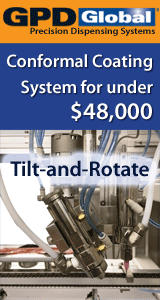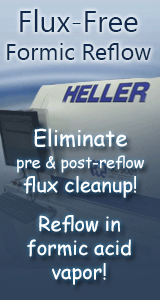Printed Circuit Board Assembly & PCB Design Forum
SMT electronics assembly manufacturing forum.
- SMTnet
- »
- Electronics Forum
- »
- PbF PCB finish
PbF PCB finish
Views: 5088
![]() Can some of you kindly share some of your experiences with P...
- Jan 23, 2007
by
Can some of you kindly share some of your experiences with P...
- Jan 23, 2007
by
![]()
![]()
![]() Immersion Silver, ImAg, is becoming the finish of preference...
- Jan 24, 2007
by
electron hose
Immersion Silver, ImAg, is becoming the finish of preference...
- Jan 24, 2007
by
electron hose
![]()
![]()
![]() immersion silver has become my favorite finish for lead free...
- Jan 24, 2007
by
RDR
immersion silver has become my favorite finish for lead free...
- Jan 24, 2007
by
RDR
![]()
![]()
![]() We have been using SN100C lead free hasl for over a year now...
- Jan 24, 2007
by
brad
We have been using SN100C lead free hasl for over a year now...
- Jan 24, 2007
by
brad
![]()
![]()
![]() Strange as we have had huge problems with Silver in Many dif...
- Jan 25, 2007
by
Strange as we have had huge problems with Silver in Many dif...
- Jan 25, 2007
by
![]()
![]() We've had the same issues with silver. We also ran into shel...
- Feb 02, 2007
by
We've had the same issues with silver. We also ran into shel...
- Feb 02, 2007
by
![]()
![]() The wetting problem is strange, is the metal in the pot a go...
- Feb 04, 2007
by
The wetting problem is strange, is the metal in the pot a go...
- Feb 04, 2007
by
![]()
![]() ASIR,
Findings for us so far:
OSP- has worked well for...
- Feb 05, 2007
by
ASIR,
Findings for us so far:
OSP- has worked well for...
- Feb 05, 2007
by
asir
- SMTnet
- »
- Electronics Forum
- »
- PbF PCB finish








